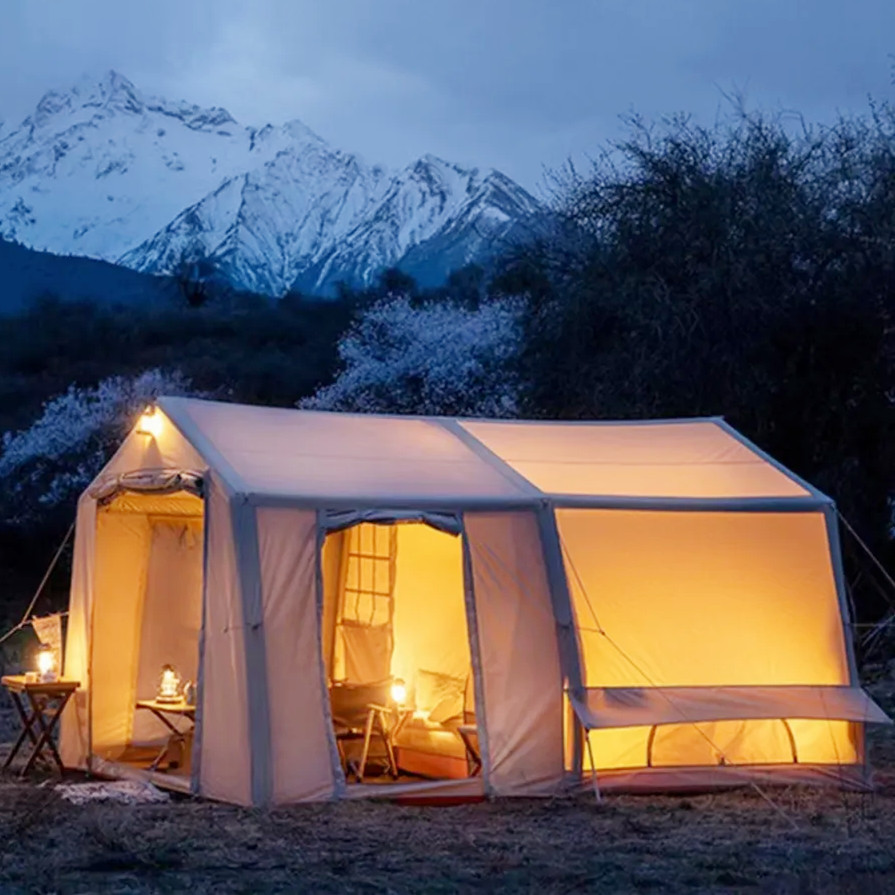Inflatable tents represent a paradigm shift in portable architecture, merging rapid deployment with multifunctional adaptability for civilian, commercial, and emergency use. These structures leverage advancements in material science, engineering, and technological integration to meet the evolving demands of diverse sectors.
Modern inflatable tents utilize high-tensile TPU (thermoplastic polyurethane) or PVC-coated Oxford fabrics, offering exceptional tear resistance and weatherproofing. Unlike traditional tents that rely on rigid poles, airbeam technology enables inflation within 5–10 minutes via electric pumps or manual systems. This eliminates complex assembly and significantly reduces setup time, making these tents ideal for rapid-response scenarios.
A 60 m² inflatable tent reinforced with 0.5mm-thick aluminum alloy connectors can withstand wind speeds up to 100 km/h. These engineering advancements have been influenced by aerospace innovations, such as China’s development of reusable rocket engines, which require lightweight yet durable materials. Additionally, eco-friendly PVC recycling initiatives align with global sustainability trends, reducing the environmental footprint of temporary structures.
Further material advancements include the use of nano-coatings to enhance UV resistance and anti-microbial treatments to prevent bacterial growth in medical settings. Smart materials, such as self-healing polymers, are being explored to improve tent longevity and reliability. These developments highlight the ongoing evolution of inflatable tent technology.
Inflatable decontamination tents, featuring single and multi-chamber designs, play a crucial role in biosecurity within disaster zones.Their rapid deployment capability and modular scalability have made them indispensable in global health crises and disaster management.
Similarly, disaster relief agencies use inflatable shelters to provide temporary housing after earthquakes, floods, and hurricanes. These tents are equipped with insulation layers and solar-powered ventilation to ensure livable conditions in harsh environments. Organizations like the Red Cross and Médecins Sans Frontières have increasingly incorporated inflatable shelters into their rapid response strategies.
Mobile clinics utilizing inflatable modules have supported vaccination campaigns and primary healthcare delivery in remote areas. In China, where the National Medical Products Administration recently approved 48 innovative drugs, the demand for portable medical infrastructure has grown significantly. Inflatable medical tents equipped with negative pressure systems and integrated diagnostic tools have revolutionized emergency care accessibility.
Beyond emergency applications, inflatable tents have gained traction in the commercial sector. From pop-up retail stores to outdoor exhibitions, these structures provide customizable solutions for dynamic business needs. A typical 30 m² unit can accommodate 10–20 occupants, making it ideal for temporary event spaces.
The rise of the "experience economy" has further driven demand for flexible event structures. Additionally, the tourism industry has embraced luxury camping (glamping) trends, integrating inflatable lodges with amenities such as solar panels, Wi-Fi, and climate control.
